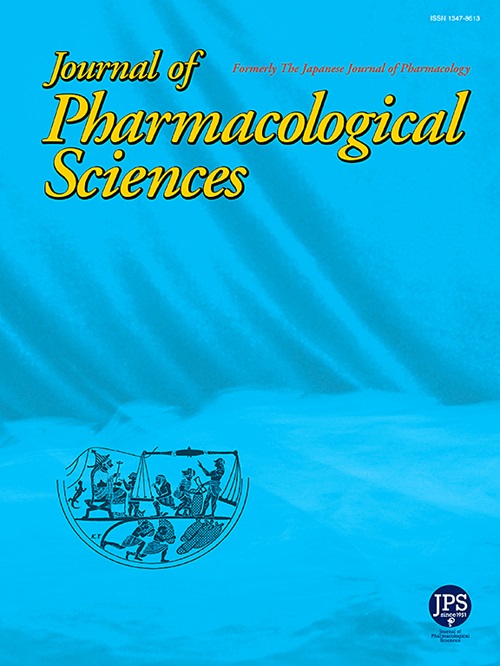Neuroprotective effects of compounds interacting with carrier-mediated amantadine transport across the blood–retinal barrier in rats
IF 2.9
3区 医学
Q2 PHARMACOLOGY & PHARMACY
引用次数: 0
Abstract
Retinal drug delivery via peripheral administration enhances the safety and efficacy of retinal pharmacotherapy. As retinal drug distribution from the circulating blood is limited by the blood–retinal barrier (BRB), BRB-permeable retinal drugs with potent pharmacological effects are needed for peripheral administration. Our previous research indicated carrier-mediated retinal transport of amantadine, which has neuroprotective effects by inhibiting N-methyl-d-aspartate receptors, across the BRB. As several amantadine derivatives are also suggestive to strongly interact with the carrier-mediated amantadine transport at the BRB, these compounds are proposed as candidates for the treatment of retinal diseases after peripheral administration. To find the appropriate retinal drug candidate, neuroprotective effects of compounds interacting with carrier-mediated amantadine transport across the BRB were firstly evaluated using primary-cultured rat cortical neurons. As a result, N'-(1-adamantyl)ethane-1,2-diamine (test compound) exerted the most potent neuroprotective effects. In addition, this test compound indicated neuroprotective effects against retinal damage after intraperitoneal administration in retinal damage rats. Our findings suggest the test compound, which interacts with carrier-mediated amantadine transport across the BRB and protected neurons from excitotoxicity in vitro, is a key agent to develop the pharmacotherapy with peripheral administration of medicines for retinal diseases.
化合物与载体介导的金刚烷胺在大鼠血液-视网膜屏障中的转运相互作用的神经保护作用
视网膜外周给药提高了视网膜药物治疗的安全性和有效性。由于视网膜药物在循环血液中的分布受到血视网膜屏障(BRB)的限制,因此需要具有有效药理作用的BRB渗透性视网膜药物进行外周给药。我们之前的研究表明,金刚烷胺通过载体介导的视网膜运输,通过抑制n -甲基-d-天冬氨酸受体,具有神经保护作用。由于一些金刚烷胺衍生物也提示与BRB中载体介导的金刚烷胺运输强烈相互作用,这些化合物被认为是外周给药后治疗视网膜疾病的候选者。为了寻找合适的视网膜候选药物,我们首先利用原代培养的大鼠皮质神经元来评估与载体介导的金刚烷胺转运相互作用的化合物的神经保护作用。因此,N'-(1-金刚烷基)乙烷-1,2-二胺(测试化合物)发挥了最有效的神经保护作用。此外,该化合物在视网膜损伤大鼠腹腔注射后显示出对视网膜损伤的神经保护作用。我们的研究结果表明,该化合物与载体介导的金刚烷胺在BRB上的转运相互作用,并在体外保护神经元免受兴奋性毒性,是开发视网膜疾病外周给药药物治疗的关键药物。
本文章由计算机程序翻译,如有差异,请以英文原文为准。
求助全文
约1分钟内获得全文
求助全文
来源期刊
CiteScore
6.20
自引率
2.90%
发文量
104
审稿时长
31 days
期刊介绍:
Journal of Pharmacological Sciences (JPS) is an international open access journal intended for the advancement of pharmacological sciences in the world. The Journal welcomes submissions in all fields of experimental and clinical pharmacology, including neuroscience, and biochemical, cellular, and molecular pharmacology for publication as Reviews, Full Papers or Short Communications. Short Communications are short research article intended to provide novel and exciting pharmacological findings. Manuscripts concerning descriptive case reports, pharmacokinetic and pharmacodynamic studies without pharmacological mechanism and dose-response determinations are not acceptable and will be rejected without peer review. The ethnopharmacological studies are also out of the scope of this journal. Furthermore, JPS does not publish work on the actions of biological extracts unknown chemical composition.

 求助内容:
求助内容: 应助结果提醒方式:
应助结果提醒方式:


